 W
WThe Abelló Museum is a municipal art museum located in Mollet del Vallès, in El Vallès Oriental. Opened on 29 March 1999, its principal collection comprises pieces from artist and collector Joan Abelló, which donated his collection to the city in 1996, creating the Joan Abelló Foundation, an independent organisation of the Mollet del Vallès Town Council. The museum is located in an Art Nouveau-style building from 1908, of which only the façade has been preserved.
 W
WThe Argentona Water Jug Museum, founded in 1975, is located in a building which opened on 20 July 2000. The origins of the museum can be found in the Water Jug Festival, which is celebrated on 4 August every year since 1951, upholding a traditional celebration dating back to the 17th century, brought about by a ‘vow of the town' to Saint Dominic, patron saint of water, to protect Argentona from a grave pestilence. Every year, coinciding with the Water Jug Festival, the Water Jug Museum organises the International Ceramic and Pottery Festival, the dates of which vary according to the day on which 4 August falls, in order to disseminate and promote the conservation of traditional pottery and the new values of the ceramics being produced.
 W
WThe Museu Barbier-Mueller d'Art Precolombí was the only museum in Europe devoted exclusively to the artistic legacy of the pre-Columbian cultures of the Americas. It was located in the Catalan capital of Barcelona, Spain. The museum was established in 1997 to house the pre-Columbian art collection formerly held by its parent museum, the Barbier-Mueller Museum in Genève, Switzerland, which was loaned to the city of Barcelona. In 2012, the museum was unable to reach a purchase agreement with the collection's owner Jean Paul Barbier-Mueller. Subsequently, the world's most important Pre-Columbian collection in private hands was split and auctioned at Southeby's on 22 March 2013.
 W
WThe Biblioteca Museu Víctor Balaguer is located in Vilanova i la Geltrú and was founded in 1884 by Víctor Balaguer so as to thank the city for its support during his politician career. Since 2000 the museum is part of the National Art Museum of Catalonia and the library is part of the National Library of Catalonia.
 W
WCaixaForum Barcelona is an art gallery in Barcelona, Catalonia, Spain. It is sponsored by Barcelona bank "la Caixa", and opened in 2002 in a former factory. CaixaForum is located in the Montjuïc area, on Avinguda de Francesc Ferrer i Guàrdia. The museum houses art exhibits.
 W
WCaixaForum is a cultural centre managed by Fundación “La Caixa” located in 3 Avinguda de Blondel, in the city of Lleida, cornering Avinguda de Madrid, in the building popularly known as Montepío after the former name of a bank located in this building. The building which was the site of Cine Viñes became the cultural centre of Fundación “La Caixa” in 1989, so we can say that this building has always been related to cultural activities. It was later renamed in 2008 to keep the same naming convention of other centres from La Caixa.
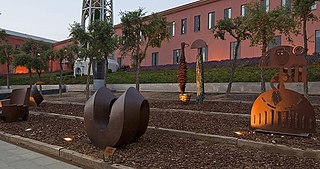 W
WCan Mario Museum is the Fundació Vila Casas Museum of Contemporary Sculpture in Palafrugell. It was opened in 2004. It has around 220 works on show dating from the 1960s to the present day by a wide range of artists born or living in Catalonia. Temporary exhibitions are also held every year.
 W
WThe Can Tinturé Museum, in Esplugues de Llobregat, is located in a house built at the end of the 19th century by architect Claudi Duran i Ventosa, and is the first monographic sample tile museum in Spain. The Can Tinturé Museum also manages the museum at the Pujol i Bausis factory, La Rajoleta, which was a point of reference in the production of Catalan industrial tiles, especially during the highpoint of Art Nouveau. The Museum is part of the Barcelona Provincial Council Local Museum Network and of the territorial system of the Science and Technology Museum of Catalonia.
 W
WCau Ferrat, located in Sitges, was the home and study of artist and writer Santiago Rusiñol, one of the most important figures of the Modernisme movement in Catalonia. It is one of the three museums in Sitges located on the shores of Sant Sebastià beach.
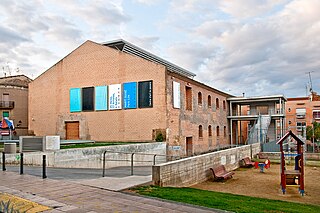 W
WThe Centre d'Art la Panera is an art museum in Lleida, Catalonia, Spain. It's named after Carrer de la Panera, the street where it's located, in the old-town area known as Els Vins.
 W
WCentre d'Art Santa Mònica (CASM), more commonly abbreviated as Arts Santa Mònica, is a public venue in Barcelona, (Catalonia) opened in 1988, for exhibiting traveling contemporary art. It is located in the Raval side of Rambla de Santa Mònica. It hosts a number of travelling expositions of contemporary Spanish and international artists every year. Entrance is free.
 W
WThe Centre de Cultura Contemporània de Barcelona is an arts centre in Barcelona, Catalonia, Spain.
 W
WThe Cerdanyola Art Museum, also known as Can Domènech, is an art museum located in the old quarter of the city of Cerdanyola del Vallès. It was opened on 10 September 2009 and is part of the Barcelona Provincial Council Local Museum Network and of the Art Nouveau European Route.
 W
WThe Dalí Theatre and Museum, is a museum dedicated to the artist Salvador Dalí in his home town of Figueres, in Catalonia, Spain. Salvador Dalí is buried in a crypt below the stage. The museum received 1,368,755 visitors in 2016.
 W
WThe El Prat Museum, in El Prat de Llobregat, was created in 1962 as part of an initiative of the town council to recover the town’s historic and natural heritage. It is located in Balcells Tower, a building from the mid-19th century that was used for farming and as a summer residence, and is part of the Barcelona Provincial Council Local Museum Network. In the next few years the El Prat Museum will relocate to a new building currently under construction.
 W
WThe Fundació Antoni Tàpies is a cultural center and museum, located in Carrer d'Aragó, in Barcelona, Catalonia. It is dedicated mainly to the life and works of the painter Antoni Tàpies.
 W
WGaleries Dalmau was an art gallery in Barcelona, Spain, from 1906 to 1930. The gallery was founded and managed by the Symbolist painter and restorer Josep Dalmau i Rafel. The aim was to promote, import and export avant-garde artistic talent. Dalmau is credited for having launched avant-garde art in Spain.
 W
WThe Gaudí House-Museum, located within the Park Güell in Barcelona, is a historic home museum that houses a collection of furniture and objects designed by the Spanish architect Antoni Gaudí. It was the residence of Antoni Gaudí for almost 20 years, from 1906 till the end of 1925. On 28 September 1963 it opened as a historic home museum.
 W
WThe Granollers Museum is a heterogeneous collection comprising archaeology, decorative arts, ethnography, numismatics and ancient, modern and contemporary art. The Museum, which is part of the Barcelona Provincial Council Local Museum Network, coordinates and supports a major part of the archaeological excavations taking place in the region of El Vallès Oriental, while promoting awareness and protection of local cultural heritage. In addition, the Museum manages L'Adoberia, the medieval Granollers historic interpretation centre.
 W
WThe L’Hospitalet Museum, in L'Hospitalet de Llobregat (Barcelonès), is a municipally owned cultural facility that aims to disseminate and conserve the cultural heritage and resources of L'Hospitalet. The museum was opened in 1972 in Casa Espanya, built in the 16th century, and is part of the Barcelona Provincial Council Local Museum Network.
 W
WCan Negre is a 17th-century masia located in Sant Joan Despí, which was renovated by Art Nouveau architect Josep Maria Jujol between 1915 and 1930.
 W
WLleida Museum, officially the Diocesan and Comarcal Lleida Museum, is an art and history museum located in Lleida, Catalonia, Spain.
 W
WThe Maricel Museum is a museum located in the centre of Sitges; reopened after a major refurbishment in 2015.
 W
WThe Mataró Museum is a museum in Mataró, in El Maresme, with a central office in Can Serra, a fortified Renaissance building dating back to 1565. The Museum, which is part of the Barcelona Provincial Council Local Museum Network, also manages the different local heritage centres, such as:The Ca l’Arenas Art Centre, part of the Mataró Museum. The Torre Llauder Archaeological Site. The El Montnegre i el Corredor Park Documentation Centre of the Catalan Coastal Range. The Can Marfà Knitwear Museum is devoted to the knit fabric industry.
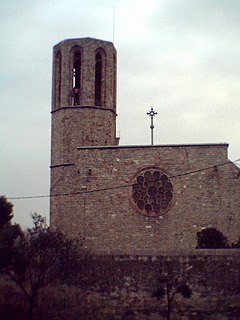 W
WThe Monastery of Pedralbes is a Gothic monastery in Barcelona, Catalonia, Spain. It is now a museum, housing permanent exhibitions on its own art and legacy as well as third-party special exhibitions from time to time. The Chapel of St. Michael was restored and re-opened in 2018.
 W
WThe Museu Comarcal de Manresa is a pluridisciplinary museum created on 2 September 1896 in Manresa and currently located in the old elementary school of Sant Ignasi. It is part of the Barcelona Provincial Council Local Museum Network.
 W
WThe Museu d'Art Jaume Morera is a museum in Lleida (Catalonia) created by the Diputació de Lleida and the Lleida City Council with the collaboration of the painter Jaume Morera i Galícia. It is the museum of modern and contemporary art of the city of Lleida. Today is municipally owned and receives financial support from the Diputació de Lleida and the Department of Culture of the Generalitat of Catalonia. Its entrance is free.
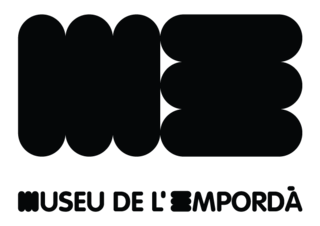 W
WThe Museum of the Empordà is an art museum in Figueres, Catalonia (Spain). Its history dates back to 1885, when the first collections arrived from the Prado Museum, bringing together a collection of artworks from the Catalan art scene and the Empordà in particular. The collection includes archaeological works, medieval art and Baroque paintings. Built in 1946, the building was opened in 1971. From 1998 onwards it has been managed by a consortium made up of Figueres Town Council, the Regional Council of Alt Empordà and the Gala-Salvador Dalí Foundation. As of 2015 the consortium has been dissolved, and the museum is managed by the Department of Culture of Figueres Town Council.
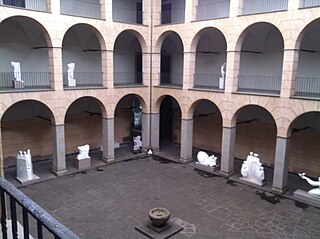 W
WThe Museu de la Garrotxa is a museum in Olot, Catalonia, Spain. It is associated with the Museu Nacional d'Art de Catalunya in Barcelona; the other institutions in this association are the Biblioteca Museu Víctor Balaguer and the Cau Ferrat (Sitges). The museum is housed in an 18th-century neoclassical building designed by architect Ventura Rodríguez.
 W
WThe Museu de les Arts Decoratives, in English Decorative Arts Museum, is a museum opened on 1932 and located in the Palau Reial de Pedralbes in Barcelona. Created in 1932, this historic museum contains a rich and diverse collection of European decorative arts, from the Middle Ages to the Industrial Revolution. In 1995, the museum extended its boundaries with the incorporation of design, thus converting it into the first and only statewide museum concerned with the preservation and exhibition of Spanish industrial design. The collections of the Museu de les Arts Decoratives were created from an important resource of industrial design and decorative art objects, that included salvers, carriages, furniture, wallpaper, clocks, tapestries and glasswork.
 W
WThe Palau Foundation is an art exhibition centre in the centre of Caldes d'Estrac, in the region of El Maresme (Catalonia). It was opened in May 2003, to exhibit and disseminate the art collection that had been compiled by Josep Palau i Fabre, as well as its archives and library. Of particular importance is its archive and bibliographical collection on Pablo Picasso. The Palau Foundation is part of the Catalan Art Museums Network and 'Espais Escrits', the Catalan Literary Heritage Network.
 W
WThe Sabadell Art Museum or MAS is a museum specialised in Catalan painting from the 19th and 20th centuries and is located in Sabadell, the capital of El Vallès Occidental. It is part of the Barcelona Provincial Council Local Museum Network.
 W
WThe Salvador Dalí House-Museum is the house in Portlligat, Catalonia, Spain, where Salvador Dalí lived and worked from 1930 to 1982. After the death of his wife Gala Dalí, he took up residence at Púbol Castle.
 W
WThe Sant Andreu de Llavaneres Archive Museum, in Sant Andreu de Llavaneres (Maresme), is located in Can Caralt, an 18th-century farmhouse converted into a manor house in the second half of the 19th century. Can Caralt also houses the municipal archives.
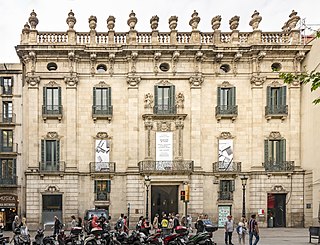 W
WThe Virreina Palace is a building in the city of Barcelona. Situated on the famous La Rambla avenue, today it houses the headquarters of the city council's Culture Institute and hosts various temporary art exhibitions and cultural events.